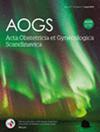External validation of the Fetal Medicine Foundation model for preterm pre-eclampsia prediction at 11–14 weeks in an Australian population
Abstract
Introduction
Pre-eclampsia causes adverse maternal and perinatal complications and is preventable through early screening and aspirin treatment. This study evaluates the predictive performance of the Fetal Medicine Foundation first-trimester preterm pre-eclampsia competing risks model in an Australian population.
Material and Methods
This was a retrospective cohort study of prospectively collected multisite screening data and pregnancy outcomes between 2014 and 2017 in Australia. Individualized risk for preterm pre-eclampsia was calculated using the Fetal Medicine Foundation model at 11–14 weeks by using maternal factors, biophysical biomarkers (mean arterial pressure (MAP), uterine artery pulsatility index (UtA-PI)), and serum biochemical biomarkers (placental growth factor (PlGF) and/or pregnancy-associated plasma protein A (PAPP-A)). The predictive performance was evaluated using the area under the receiver-operating characteristic curve (AUC) and calibration. The detection rates for delivery with preterm pre-eclampsia were calculated at a 10% fixed false-positive rate. Decision curve analysis of the model was evaluated.
Results
Of 29 609 women screened, 132 (0.45%) experienced preterm pre-eclampsia. The median age (interquartile range) was 34 (30–38) years. Women with pre-eclampsia had higher multiple of the median values of MAP and UtA-PI and lower values of PIGF and PAPP-A compared to those without pre-eclampsia. Combined screening by maternal factors, biophysical, and biochemical biomarkers yielded an AUC of 0.87 (95% CI 0.79–0.92), detecting 71% of preterm pre-eclampsia cases at 10% fixed false-positive rate, with the addition of PlGF improving the detection rate by 31% over sole PAPP-A use. Preterm pre-eclampsia screening using maternal factors with all biomarkers showed better clinical net benefit at preference thresholds between 1% and 12% compared to default strategies.
Conclusions
The Fetal Medicine Foundation model, combining maternal factors with biophysical and biochemical biomarkers, demonstrated similar predictive performance in the Australian population compared to previous validation studies in other settings, detecting 71% of preterm pre-eclampsia cases at 10% fixed false-positive rate. The clinical utility analysis showed that early screening and intervention strategies based on a risk-based screening approach is more beneficial than universal or no intervention strategies.




 求助内容:
求助内容: 应助结果提醒方式:
应助结果提醒方式:


